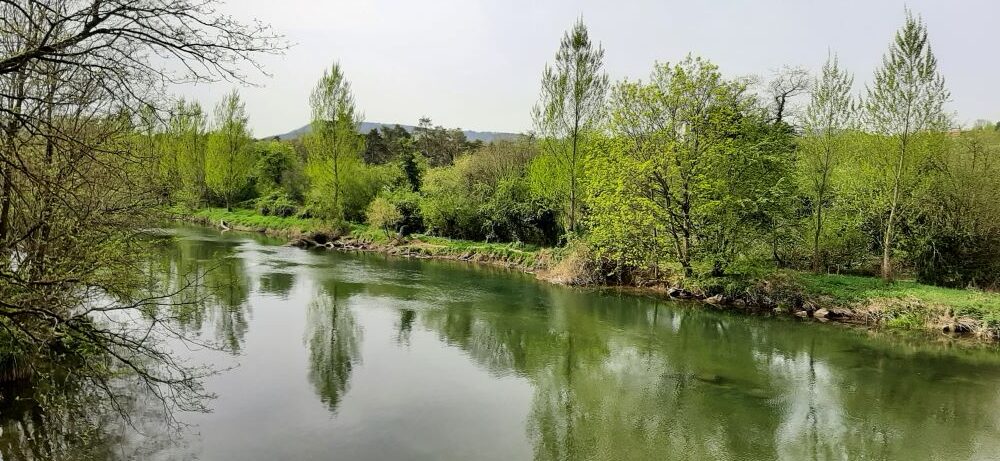Numerous artists have been trying for centuries to surpass nature’s beauty. However, nature is the greatest artist, and humans cannot reproduce the original in all its splendour. Artists can, however, depict or interpret nature differently. This can be based on aesthetic, political, social, or historical motifs.
Italian masters introduced the first (fictitious) landscapes in the 14th century, and Dutch and Flemish masters followed with polders, forests, meadows, rivers, and, later, even fictitious mountain landscapes. German and English artists gave a place to romantic impressions of nature, Jean-Jacques Rousseau introduced nature into literature, French impressionists had their own perspective, and the 20th and 21st centuries inspired modern artists in their own way.

Norbert Tadeusz (1940-2011), Aaper Wald II, 2006. Collection Würth, Inv. 15275

Roots of a tree along the Birs
And yet nature is still unrivalled. Forum Würth in Arlesheim, however, has an original concept for combining the art of nature with the art of people. The exhibition Forest Fascination. Trees and Woods in Paintings and Sculptures (Waldeslust. Bäume und Wald in Bildern und Skulpturen) prominently features nature among works by around 60 artists from the 19th century to the present day. The works range from painting, sculpture, drawing, installation art, photography, film, video, and other artistic applications.
As usual, the works come from the Würth Collection and have already been shown at other Würth locations. However, the special thing about travelling exhibitions from the Würth Collection is that each location has its own perspective, as is the case in Arlesheim.

View of the exhibition
The forest and the tree are often a theme in Switzerland. The motifs range from concern for the forest, the role of the tree in society, the city and nature, respect for the tree as a creation of nature, the forest as a source of inspiration, tranquillity and as an authentic habitat, the forest as a place of stories, legends and fairy tales, to the forest as a place for travelling and hiking.

Robert Longo (* 1953), without title (Fair mount Forest), 2011, Collection Würth, Inv. 15015. © 2024, ProLitteris, Zurich. Photo: Robert Longo Studio
The tree and the forest are addressed in this exhibition through six themes: The tree from the root system to the treetop, the forest as a place of retreat, the forest as a counter-world to civilisation, the forest as a projection space for longings and fears, travelling and hiking through forests and concern for the condition of forests and trees.

View of the exhibition
A separate room on the Walderlebnis (forest experience) shows the forest’s most relevant aspects and characteristics in the four seasons. The film in this room shows the atmosphere and cycles of Swiss forests from the valley to the mountains.
The exhibition gives nature its rightful place. Nature is never far away in Switzerland, not even in the Basel Agglomeration. The Reinacher Heide along the Birs (canton of Basel-Landschaft) is a protected nature reserve located just a hundred metres from Forum Würth Arlesheim and is part of the exhibition.

The Birs and nature reserve the Reinacher Heide
Visitors can take an audio walk and a walk guided by a forester (Swiss Ranger). The exhibition also offers an extensive programme of activities for young and old.
(Source and further information: Forum Würth in Arlesheim)

The Erlebniswelt

